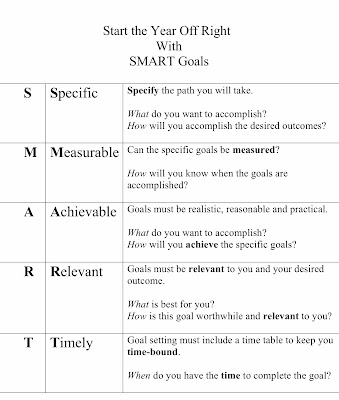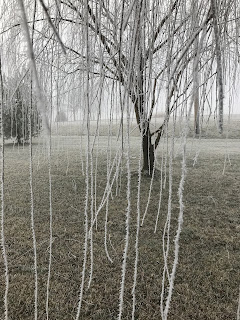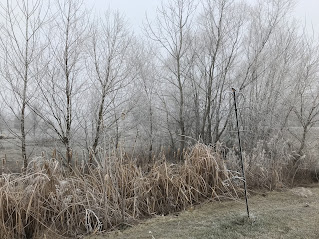Pages
Wednesday, January 27, 2021
Celebrating Multicultural Children's Book Day
Wednesday, January 20, 2021
A Labor of Love: Writing a Compilation of Nonfiction Biographies~a guest post from Vivian Kirkfield
We start 2021 with a fabulous guest post from author Vivian Kirkfield, with a look at writing picture book biographies, using her newest, stellar compilation of picture book biographies, FROM HERE TO THERE: INVENTIONS THAT CHANGED THE WAY THE WORLD MOVES as a mentor text. Being one of Vivian's critique partners, I had the privilege of seeing these 9 stories all come together in one book. Vibrant illustrations accompany Vivian's rhythmic texts. I will say, my favorites are the stories of Bertha Benz and Raye Montague. Take it away, Vivian!
Thank you so much for inviting me to Grog Blog, Tina! I’m so excited to be celebrating the launch of my newest book baby, a nine-story compilation of nonfiction picture book biographies, illustrated by the brilliant Gilbert Ford and published by Houghton Mifflin Harcourt.
Book Baby. When I first heard that term many years ago, I wondered what it meant. A writer friend explained that it was what authors call their new books. Having experienced childbirth three times, I wasn’t sure about equating having a baby with creating a book. The planning. The pleasure. The pain.Hmmm…then again, maybe creating a book is a lot like having a
baby. Especially this one about visionaries whose innovations altered the
landscape of the planet. But how, you may be asking, did such a compilation
book come about?
The path to publication started in 2016 when I wrote a story
about Eric Wickman, the founder of the Greyhound Bus Company. I had gotten in
the groove of writing nonfiction bios a year before and I already had a
contract for Sweet Dreams, Sarah. My sister told me about a friend who
was a friend of Eric’s granddaughter. A Swedish immigrant, Eric came to America
in 1905 with only $60 in his pocket. After several failed business ventures, he
opened a car dealership, but when he couldn’t sell even one car from his showroom,
he bought it himself and started a shuttle service.
Of course, I said YES! Ann originally asked me to give her a
list of 5 or 6 ideas. I submitted a short list with a brief description of what
I might write. I guess you could call that a proposal, but it was nothing like
a true nonfiction proposal…here’s a glimpse of what I sent her:
READY!
SET! GO!
From the beginning of time, people longed to go.
Fast. Slow. High. Low. First, they walked. Next, they used animals. Then they
set their sights on faraway lands, peered into the depths of the oceans, and
cast their eyes on the stars, and wondered…how can we get there?
With a bucketful of determination, a willingness to
work hard, and a spark of imagination, these visionaries changed the way we go.
Note
to editor Ann:
I’m attaching the two sample stories: BUS (tightened
from 650 words to 420, hopefully keeping all the fun and quirky bits that you
loved) and BIKE (which you mentioned you thought would make a very kid-friendly
chapter).
And here are some ideas for the other three or four
things that go, but I am open to any ideas you have and can research and write
on any topic you prefer.
COMPUTER-DESIGNED
SUBMARINE: of great interest because it
gives the collection some diversity (Raye Montague is an African-American
woman, one of the hidden figures, not of NASA as portrayed in the movie, but of
the Navy during the 1950’s).
SKATEBOARD:
originally created by surfers in
California to use when stormy oceans prevented them from riding the waves. They
screwed roller skate wheels onto their boards and surfed the city streets. And
in 2020, skateboarding will debut as an official sport of the Tokyo Olympics.
HOT
AIR BALLOON: has a fabulous aha moment and was
invented by two brothers working together as a team – the creative genius with ADHD, and the
practical scientist who kept the project on point. (I wrote this as a
stand-alone picture book, but can tighten it for the compilation).
CAR:
might never have left the
workshop of Karl Benz if not for his wife’s secret plan to promote the car by
taking the kids on a road trip to grandma’s house. (there is a stand-alone
picture book coming out in October from Charlesbridge)
Ann and I chatted, both via email and on the phone, as we
made decisions regarding what stories I should write. Early on, she encouraged
me to be careful with my research:
Looking forward to
chatting, Vivian! Just fyi, as you write the stories, its best to keep
notes for the back matter close at hand. Documentation has become more
important these days; all direct quotes, for example, need citation. We
can discuss further but, in the meantime, attached please find documentation
guidelines from HMH.
· TRAIN (All Aboard: George Stephenson and
the First Steam Passenger Train - which you have seen and which already has the
sidebar notes).
· BIKE (With His Own Two Feet: Karl Drais
and the Invention of the First Bicycle - this needs sidebar notes and I hope
you love this story as much as I do...I think kids will think it is cool to
find out how and why the first bike was built)
· BALLOON (The Boy Who Dreamed of Flying: Joseph
and Etienne Montgolfier and the First Manned Balloon Flight which has an
awesome AHA moment and is polished, but would need sidebar notes). Or, if you'd
rather have a story about an airplane/drone, I could write that.
· ROBOT (George's Robot...taking your
suggestion, I wrote a story about the man who invented the first industrial
robot which should appeal to kids who love science fiction. It also has a great
AHA moment.
· CAR (Genius Camp: How Three Men and a
President Paved the Way for Better Roads. It's about how Henry Ford, Thomas
Edison, and Harvey Firestone took President Warren G. Harding on a camping trip
to convince him to sign a bill to allocate $162 million for better roads...this
story is polished, but needs sidebars - or if you don't feel that topic relates
closely enough to 'inventing', I also had started writing a story about Bertha
and Carl Benz and the first gasoline powered automobile.
· SUBMARINE: I thought injecting some diversity
into the collection might be a good idea (Raye Montague is an African American
woman) and it gives the book something that moves in the water. The story has a
great AHA moment, but I need to flesh the story out and I wasn't sure if
creating a program that designs submarines with a computer was too abstract an
invention for the book. If you'd prefer another water vehicle, I am happy to
research and write that one.
This makes seven...so if you only want five or
six, we can eliminate whichever you wish. Or Ann, I am totally open to any
suggestions regarding these stories or any others you would prefer for THINGS
THAT MOVE. I embrace feedback, revision is my friend, and I look forward to
working with you.
At this
point, Ann let me know that she really wanted 7-10 stories…and she definitely
wanted one about the rocket. She also preferred the story about Bertha Benz
over the Genius Camp one. I felt we needed more diversity as well – and I
suggested doing a story about the folding wheelchair, which opened doors for
mobility-challenged individuals. She loved that idea!
In one of her
previous emails, Ann had let me know that she loved the structure of the BUS
story. And that information was very helpful as I wrote each subsequent
manuscript because ‘all’ I had to do was use BUS as a template and recreate the
magic. 😊
1. Engaging opening lines.
2.
Child main character who has a dream/goal.
3.
AH-HA moment.
4.
Fun language/great rhythm/excellent pacing.
5.
Legacy paragraph that shows how the invention impacts us
today.
6.
Satisfying ending that echoes the opening lines.
Once I had
my list of visionaries, I researched them, online at first, and then I dug
deeper, using books, newspapers, and when I was lucky, interviews with family
members. I would write a rough draft and revise and give it to one of my
critique groups. And would move on to the next story. When I received feedback
on a previous manuscript, I’d revise that one. Somehow, with the help of my
amazing critique partners who were always ready to look at a new draft or a
revised one, I did it!
The
contract called for all of the manuscripts to be delivered to Ann’s inbox by
May 1, 2018. Counting back nine months brings us to the end of August which is
when I started to seriously write these manuscripts. Nine months. Yup…creating
this compilation was definitely like having a baby – and, like having a baby,
it was definitely a labor of love!
Wednesday, January 13, 2021
Move Forward With SMART Goals for 2021
By Suzy Leopold
With a new beginning many review and reflect on the 2020 year and then move forward into 2021 by making personal and/or career resolutions.
Did you make resolutions or did you set goals as a new year was ushered in?
Resolutions can be defined as a promise or a wish to do better. Most often resolutions are made with good intentions, purpose, and determination. However, by February many resolutions are left behind. They become abandoned resolutions.
Most often goals include tangible objectives and plans for what one intends to accomplish all through determination. Goal setting provides direction to achieve desired outcomes.
To be more precise—set SMART goals.
What are SMART Goals?

To achieve a successful end result with creativity on your side, consider establishing SMART Goals.
They are tangible, specific goals that are measured, possible, and achievable. They are relevant goals to match your needs in a timely fashion.
Begin by identifying three or four goals. Make sure they meet the elements of a SMART goal. Are they concrete and specific? Can you quantify and measure them? Can you achieve them realistically? Are the goals relevant to your ultimate goal? Adjust as need be to make the dreams and desires come true. Set the bar higher if you discover the SMART goals you set are not challenging you. Fine tune and recalibrate goals if they are not practical. Consider long-term and short-term goals.
Examine these SMART Goal examples and non examples.
Can you identify which ones will achieve the best results for success?
An estimated 188.9 million American adults are determine to better themselves in 2021 by:- Learning something new
- Making lifestyle changes
- Setting goals
Another interesting fact:
- 71 % of Americans are feeling hopeful in 2021.
Ready or Not. It’s Time to Show Up
If you made resolutions or goals for the new year, you may want reconsider. It’s not too late to consider SMART Goals to achieve successful results. SMART Goals can be written as personal or professional goals anytime. Take these ideas and make them your own. SMART Goals are unique to each individual.
Celebrate your success along the way as you continue to move forward through the year.
May you find insight and inspiration for your writing and/or illustrating journey by setting SMART Goals. May your promises to achieve with purpose equal success in 2021.Every new year is a time for renewal and a new beginning. Start 2021 off right by reading, writing, and creating with established SMART Goals.
“You are the key to achieving your goals.
No one else is going to do it for you.
Go find your star and make it shine.”
~Mike Ciccotello, author and illustrator
Wednesday, January 6, 2021
PRODUCTIVITY WITHOUT RESOLUTIONS OR RIGIDITY: You Are Not a Jedi (Apologies to Yoda) by Carol Coven Grannick
- What are my interests now?
- What am I capable of absolutely achieving today? (don't ever think there's something too tiny, because not the amount, but the something that encourages you)
- If I'm stuck on what I'd like to do, can I experiment with something different or new, and trust that it could be a bridge back to my original project?



























